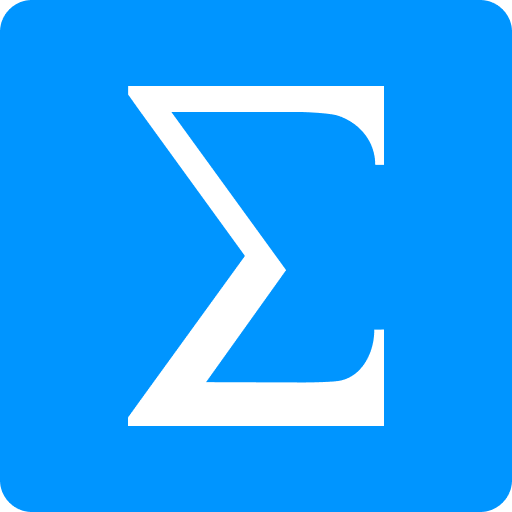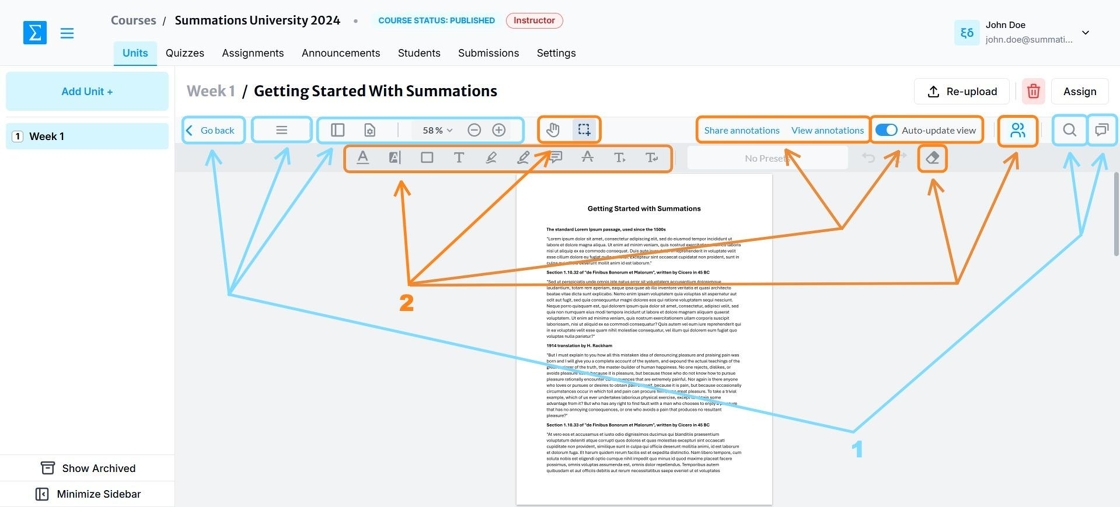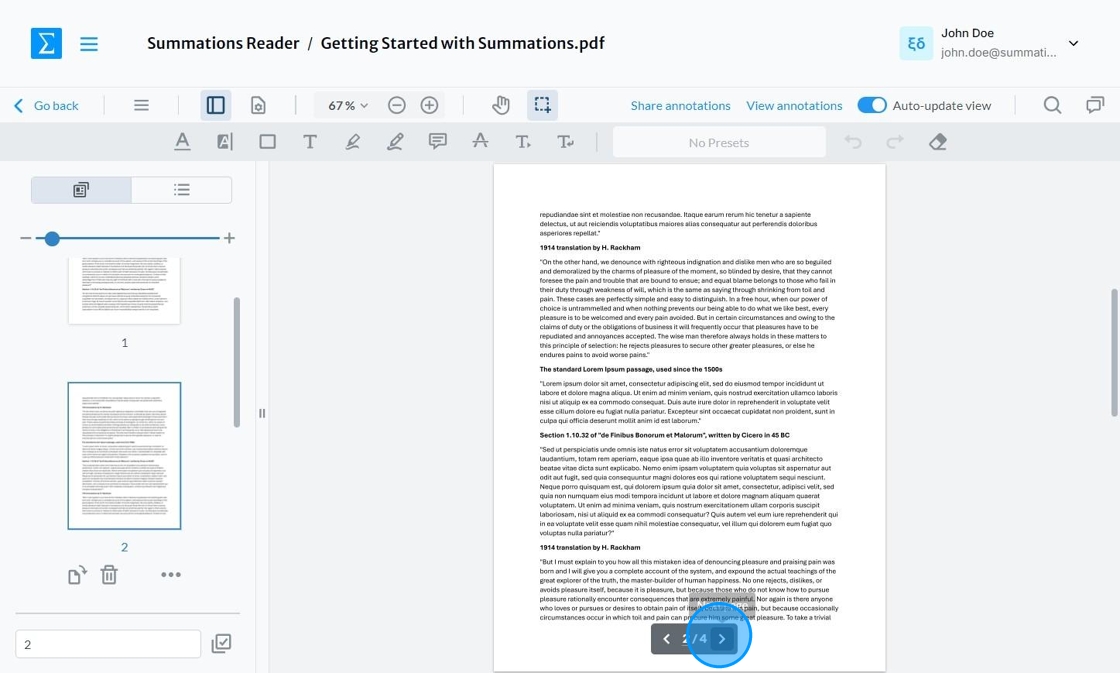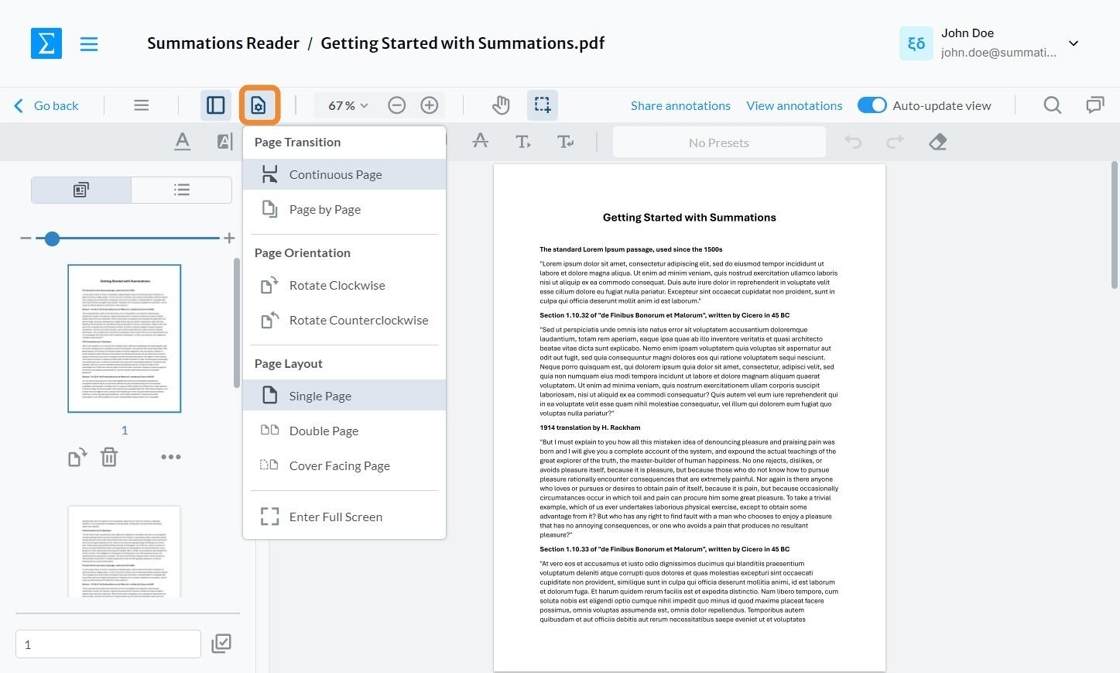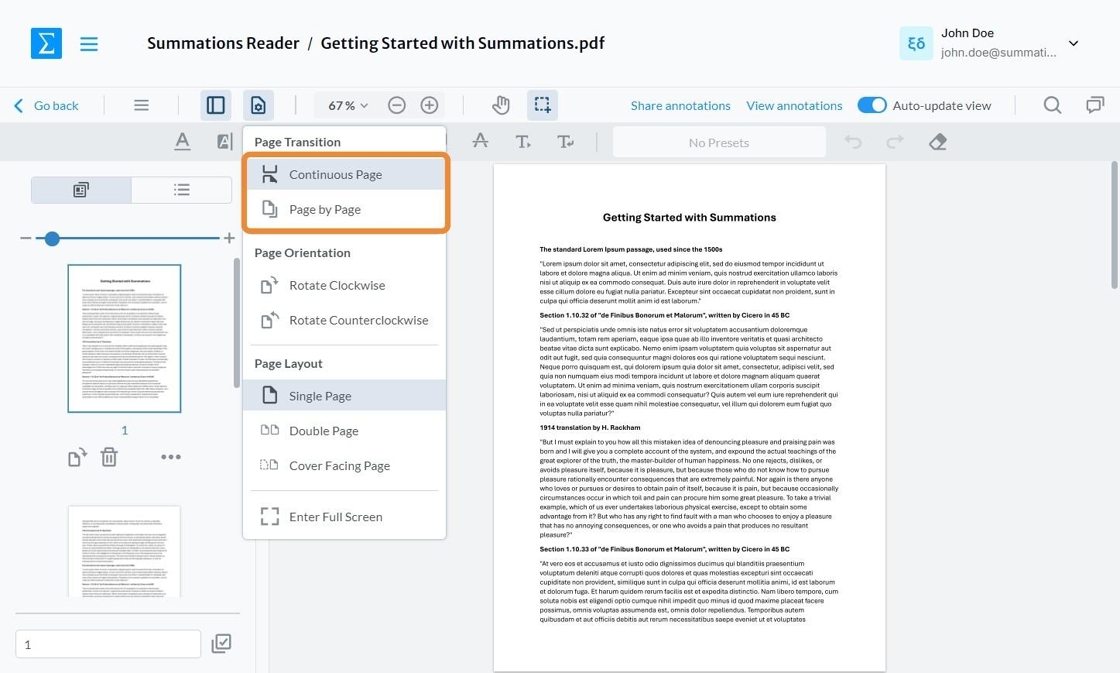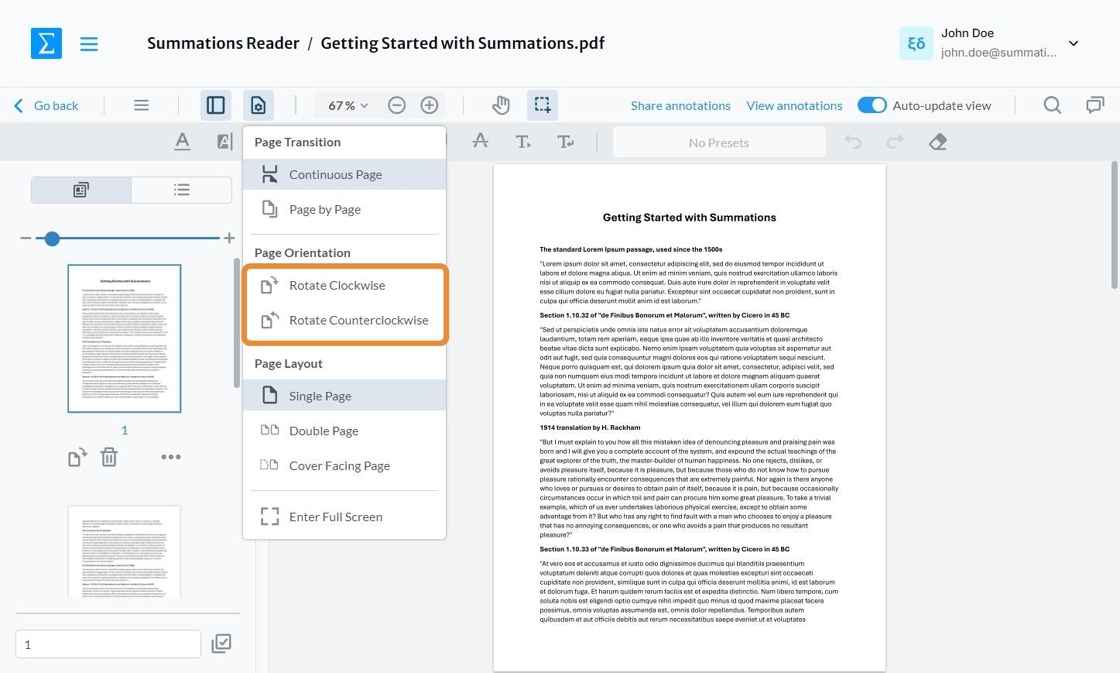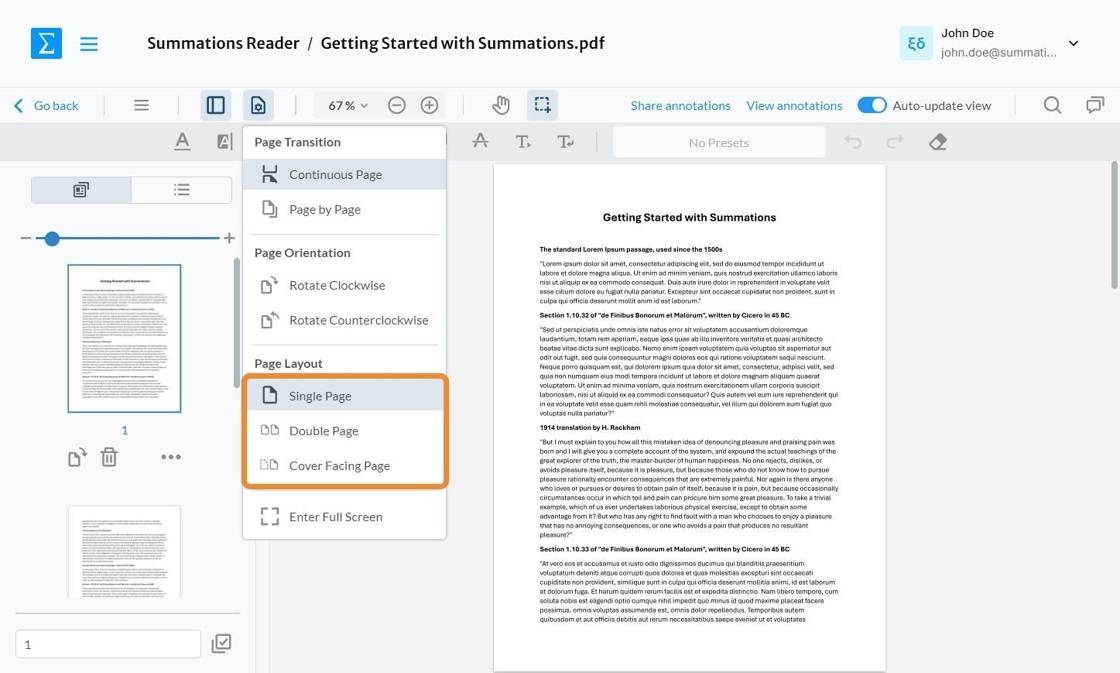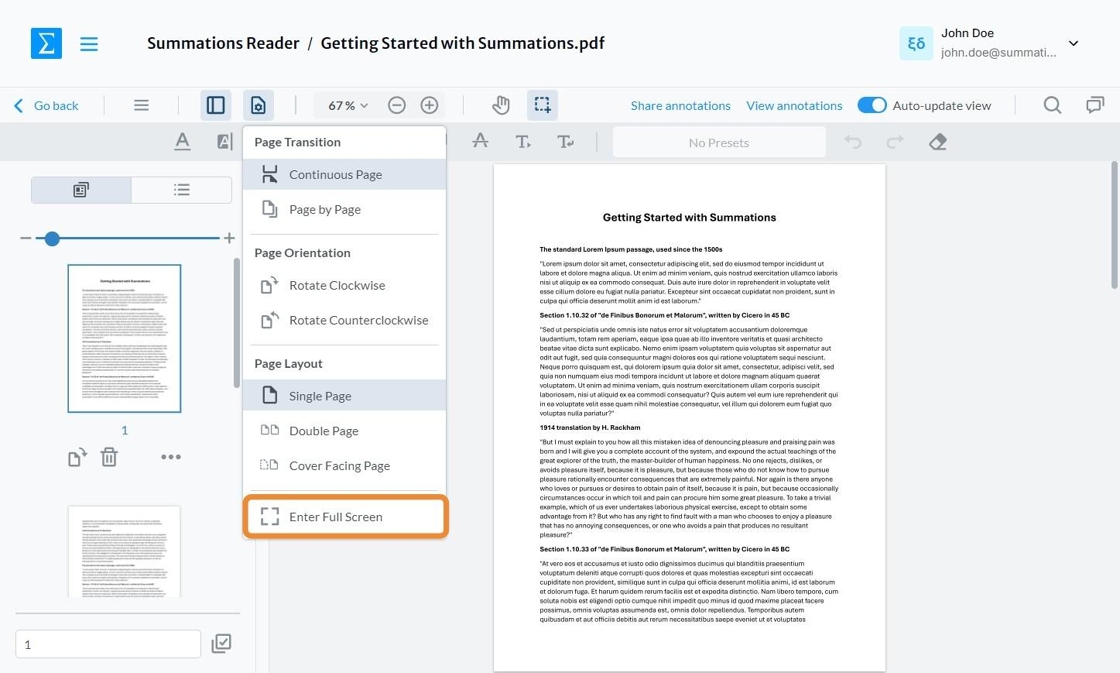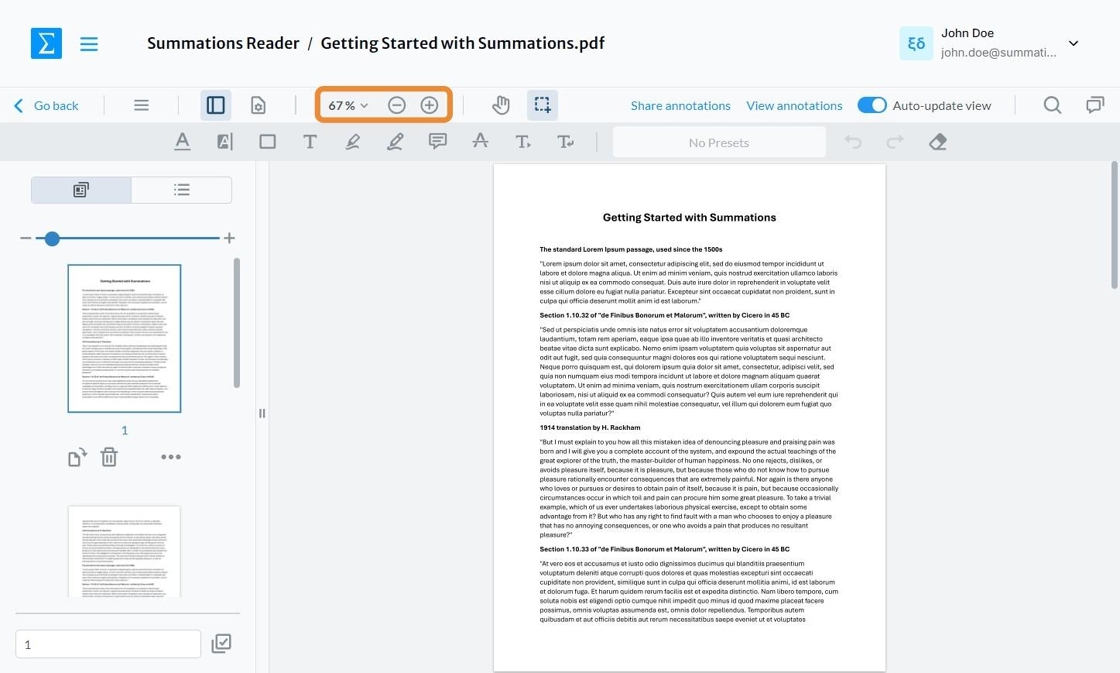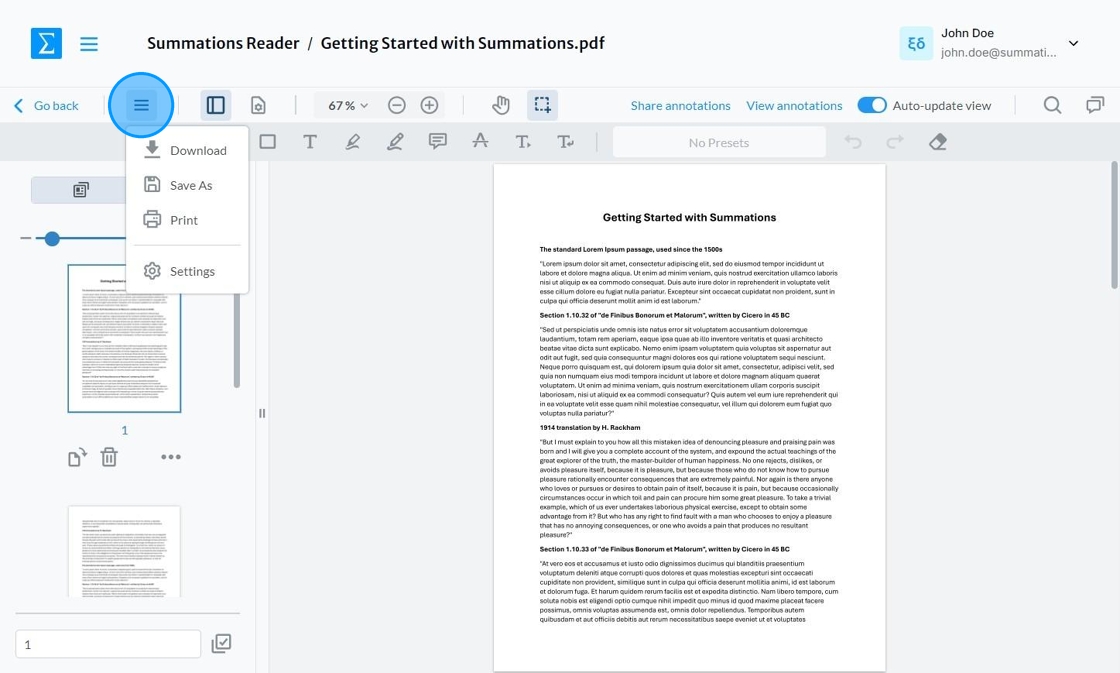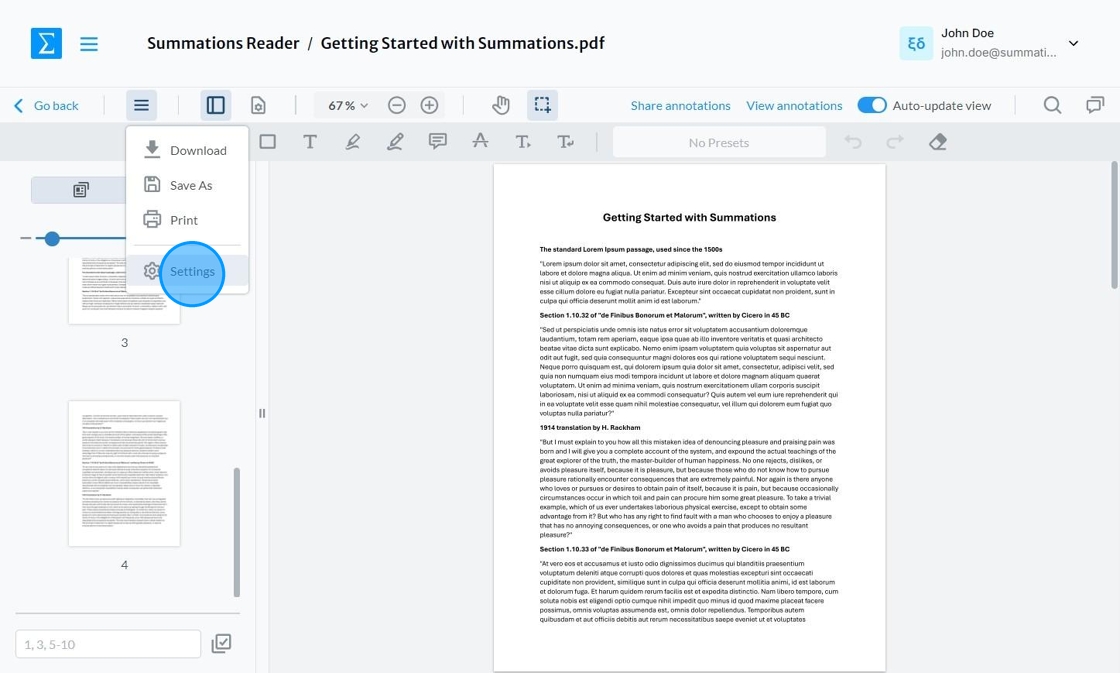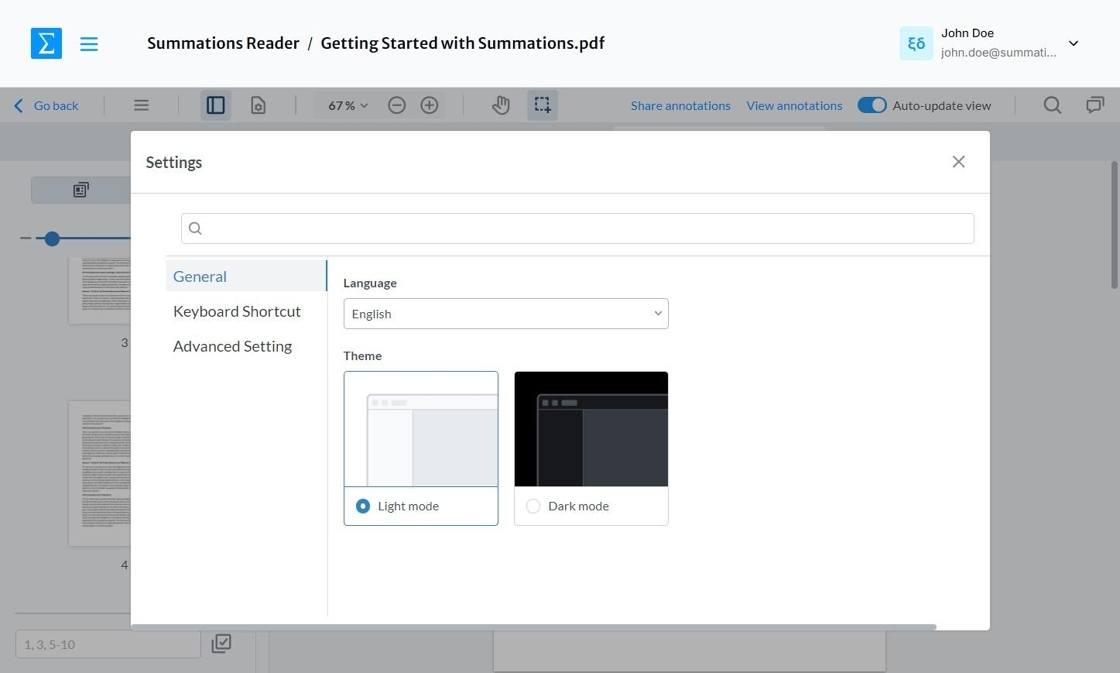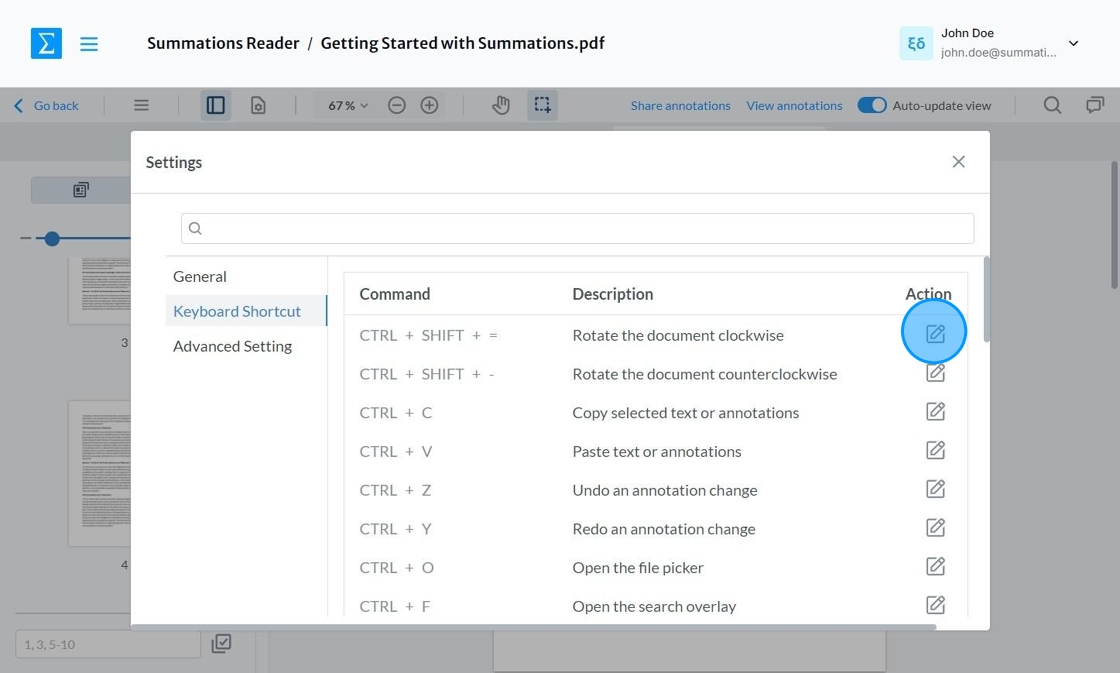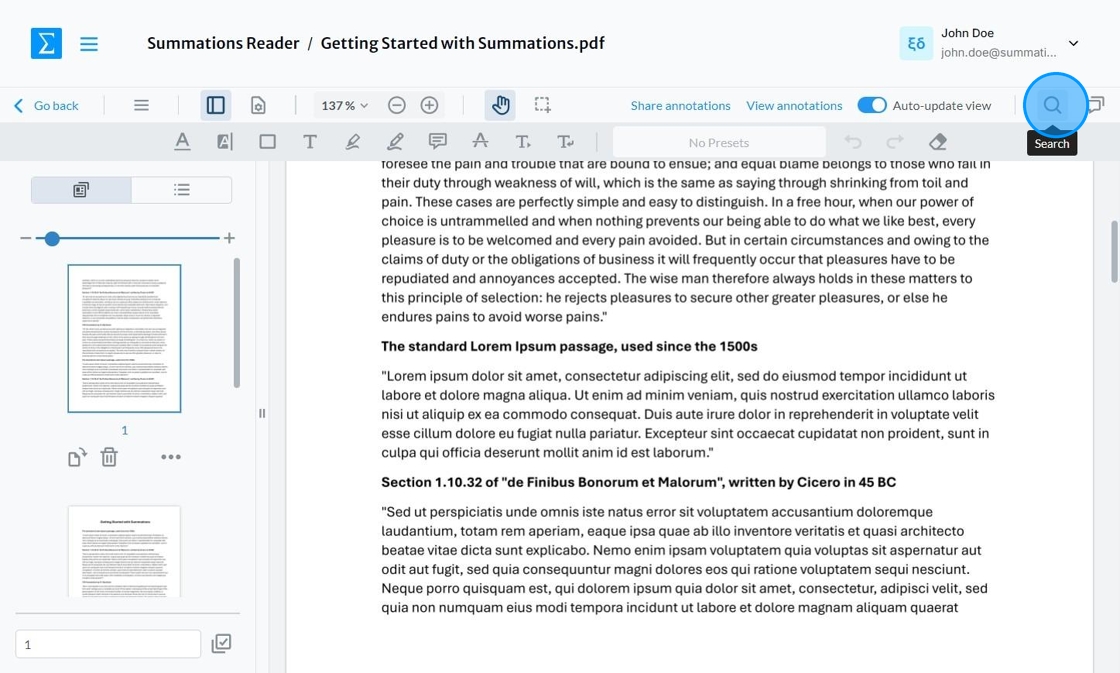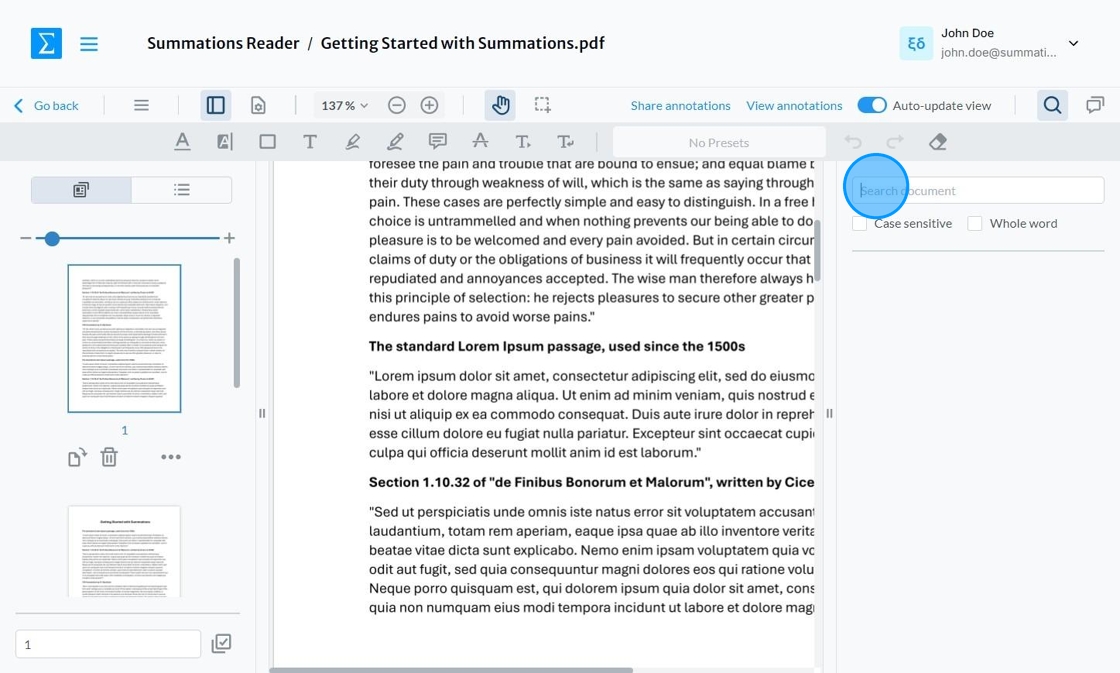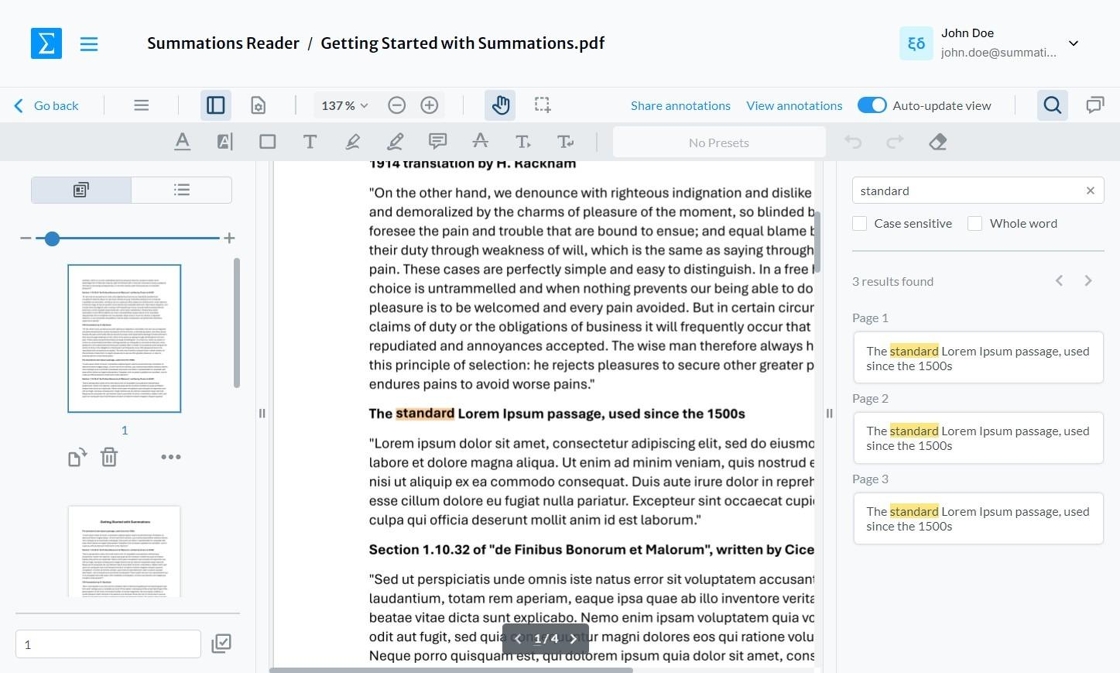Navigating the Summations Reader
Summations Reader hosts a series of collaborative insight tools built on top of all the content in Summations. It is designed to enhance student engagement by transforming static or interactive content into a dynamic learning environment. This tool enables instructors to collaborate with students and encourages students to work together with their peers.
This section provides an overview of the Summations Reader and demonstrates how instructors can navigate the settings to set up any piece of content with the Collaborative Insight Tools, making it ready for students to use.
In the Summations Reader, you can view the document alongside a variety of tools designed to enhance your navigation and interaction with the platform. These include:
Summations Reader Settings for customization.
Collaborative Insight Tools for dynamic interaction.
Below, we will guide you through the Summations Reader settings and their functionalities to help you customize your teaching experience effectively. For detailed information about collaborative insight tools, please refer to this article "Scaffolding Tools To Support Students' Learning".
Page Number
Below the document, you can view the current page number. Use the arrow icons to navigate to the previous or next page.
Page Setting Tools
The 'Settings' icon provides access to a variety of tools designed to enhance your document viewing and navigation experience. These tools allow you to customize how you interact with the document, ensuring a more tailored and user-friendly experience. The available options include:
Page Transition: Choose how you navigate through the document. Options include Continuous Page, for smooth scrolling, and Page by Page, for navigating one page at a time. This tool is ideal for customizing your reading or presentation style.
Page Orientation: Adjust the orientation of the document by rotating the page. You can select Rotate Clockwise or Rotate Counterclockwise to view the content in the angle that suits you best.
Page Layout: Modify the overall layout of the document to fit your viewing preferences. Options may include single-page or two-page spread views, enabling you to optimize the document display for different purposes, such as detailed review or quick skimming.
Full Screen: Enter full-screen mode to minimize distractions and maximize focus on the document. This setting is especially useful for presentations or when reading on smaller devices.
These tools are designed to provide a seamless and personalized experience, whether you're reading, presenting, or editing the document.
Page Transition
The Page Transition tool allows you to customize how you navigate through the document. You can select from the following options:
Continuous Page: This mode enables smooth scrolling, allowing you to view the document as a continuous flow without distinct page breaks. It's ideal for quickly browsing through content or for uninterrupted reading.
Page by Page: This mode lets you navigate one page at a time, maintaining clear page boundaries. It's especially useful for presentations or when precise referencing of page numbers is required.
You can switch between these modes based on your preference for a seamless or structured reading experience.
Page Orientation
The Page Orientation tool allows you to adjust the orientation of the document. You can choose to rotate the page in either direction:
Rotate Clockwise: Rotates the page 90 degrees to the right.
Rotate Counterclockwise: Rotates the page 90 degrees to the left.
These options enable you to customize the view for optimal readability and presentation.
Page Layout
The Page Layout tool allows you to adjust how the document is displayed. You can choose from the following layout options:
Single Page: Displays one page at a time, ideal for focused reading or when working on smaller screens.
Double Page: Shows two pages side by side, similar to an open book, perfect for comparing content or reviewing layouts.
Cover Facing Page: Displays the document with the cover page on the right, mimicking the layout of a printed publication, which is useful for reviewing professional designs.
These options enable you to customize the viewing experience to suit your specific needs.
Enter Full Screen
The Enter Full-Screen tool in the Summations Reader allows educators to maximize their workspace while reviewing course content. Full-screen mode provides an enhanced, distraction-free view for easier navigation and focus. You can exit full-screen mode at any time by pressing the "Esc" key on your keyboard.
Zoom In/Out
To adjust the zoom level of the document, click the '-' button to zoom out or the '+' button to zoom in.
Download, Save, Print, and Advanced Settings
To download, save, print the document, or access advanced formatting settings, click the three vertical lines icon.
Advanced Format Settings
To configure advanced formatting options, click Settings.
Under the 'General' tab, you can customize your preferred language and reading theme:
Language: Click the dropdown menu to select your desired language.
Reading Theme: To adjust the background, choose Light Mode for a lighter appearance or Dark Mode for a darker, more subdued look.
In the Keyboard Shortcut tab, you will find a list of commands along with their descriptions. You can modify a command by clicking the Action icon.
In the Advanced Settings tab, you can customize additional options, including Viewing, Annotations, Notes Panel, Search, and Page Manipulation.
Search Tool
To find a specific text or phrase within the document, click the Search icon.
The Search Bar will appear. Click the "Search Document" field and type the word or phrase you want to find in the document.
All instances of the word or phrase found in the document will then be displayed and highlighted, along with their corresponding page numbers.
Now that the Summations Reader is customized and set up, refer to these articles for guidance on using the collaborative insight tools to support student learning and foster engagement.
Instructional Scaffolding / Social Annotations: "Scaffolding Tools To Support Students' Learning"
Forum: "Use Forum To Encourage Broad, Reflective Discussions"
